This article originally appeared on Crossfader.
When I first heard that STRANGER THINGS was renewed for a second season, I made a very conscious decision. I enjoyed the first season. It was a nice surprise, I’m generally a sucker for ‘80s aesthetics, and I thought the music was good, but I was not nearly as hot on it as literally every breathing person between the ages of 18 and 35. So, I decided that this time around I was going to like it. “Wait”, you think, “you can’t just decide to like something!” I’m here to say I have and I will—I may have many faults, but having critical discussions about popular media is not one of them. My plan worked, and then it sort of didn’t, and then it did again. So spoiler warnings for my all my thoughts, conflicted/contrived as they may be.
STRANGER THINGS 2 returns audiences to Hawkins, Indiana and the “party” of kids, teens, and adults who fought off a monster from an alternate dimension and saved their friend. It’s sold as a “sequel to a movie” rather than a second season of a TV show, and it succeeds in that regard. The new season is self-contained enough that you could hop on now and probably not be too lost. The main storyline that carries over from the first season is the ongoing connection that Will Buyers (Noah Schnapp) has to The Upside Down (the show’s bizarro Hawkins filled with ash and goop, home to interdimensional monsters), but otherwise, the season offers all new plotlines and several new characters. The tension I found between what the show was pitched as and how it actually works became apparent the longer I watched. STRANGER THINGS 2 wants to be a film sequel in nine parts (the Chapter headings in the title of each episode are apt), but the show relies on TV instincts and strategies to pad out its length and further explore its world. Sidelining Eleven (Millie Bobbie Brown) into what is essentially the B-plot is classic TV, especially having it culminate in a standalone episode in an entirely different setting, the odd couple pairings of several of the characters (most notably Dustin and Steve), and in general, giving almost every character a plotline in the show, feels like the writers trying to make every character worthwhile, while testing the limits of the world and their performances. Being a fusion between two mediums is not bad; it works in the show’s favor, but the more I think about the story and the characters, the more I wish it erred on the side of the traditional.
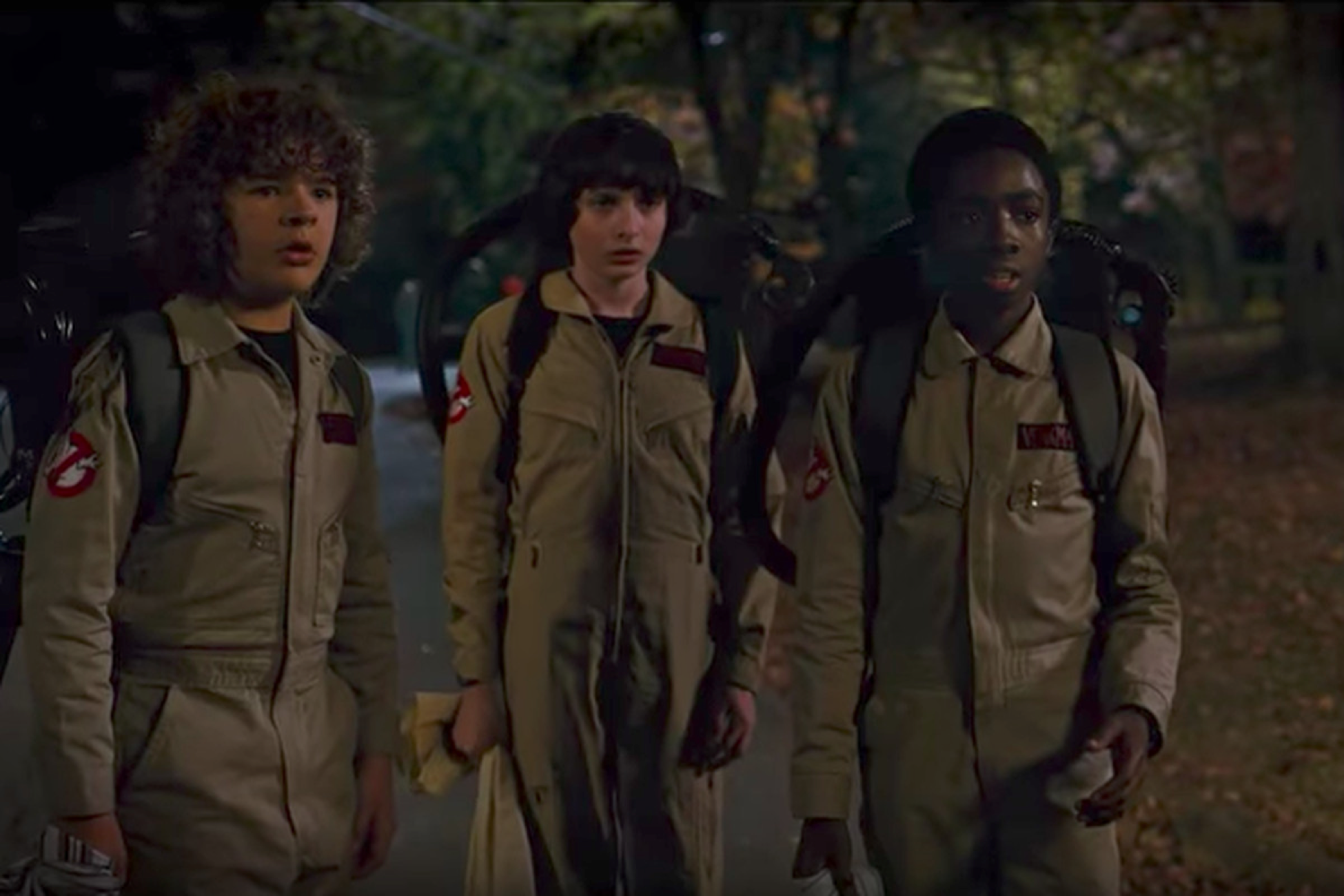
These kids. These kids are memes
The thing is, the characters exist in STRANGER THINGS to advance the plot. Movies are plot-driven, and so is the show. Some of this is because reference and homage often appear to be the default motivation (Season Two manages to reference GHOSTBUSTERS, ADVENTURES IN BABYSITTING, THE EXORCIST, and ALIENS while dipping back into E.T., CLOSE ENCOUNTERS, and FIRESTARTER), but also because the show is heavily serialized. Few of the episodes stand on their own save for the controversial Eleven-only episode (and that’s just barely). So characters are often surface-level, better at referencing and imitating things than having depth or a unique perspective. I wish that wasn’t the case. Not only because I think the actors could and should bare more (Millie Bobbie Brown and Noah Schnapp do a lot of great work this season), but because for the show to really have the longevity I imagine Netflix wants it to have, it should have a stronger base than its ongoing plot. It should rely on its characters.
Issues of motivation and intention behind the show have dogged it since the release of its first season. Look one way and it’s a cynical remix of references the people who pay for Netflix will remember, looking to spark, “Oh hey, I remember that!,” and not much more. Netflix is as money-hungry as any modern tech company, and I fully imagine someone sits in an office watching a graph of profits with one hand on a lever labelled “MORE ‘80s,” but I believe the creative side is earnest in their intentions. Like the kids in STRANGER THINGS, they know what they like and they understand the world through their passions. As discussed in the below YouTube video, the show demonstrates that through its characters, but also through its own structure.
Just as Mike, Dustin, Will, and Lucas use DnD and their favorite movies to attempt to understand that Lovecraftian horrors that exist in The Upside Down and (in the second season) below Hawkins, so does the show use its frequent homage to pick over ‘80s culture and explore themes of love through understanding. That is STRANGER THINGS 2 at its best, demonstrating that sometimes the purest form of love is understanding someone, or at least trying to. It was the courtesy Mike (Finn Wolfhard) gave Eleven when no one else would in the first season, and it’s what most of the cast does in season two to save Will Buyers. It’s a standout scene, that I’ll describe here if only because it demonstrates another inflection point of the series. As it becomes clear that Will brought something back from The Upside Down, something that goes beyond the post-traumatic stress he frequently experiences, he becomes possessed by the big bad of the second season (potentially the whole show), a spidery shadow monster nicknamed “The Mind Flayer.” Here his family and friends perform an amateur exorcism in attempt to free him and hurt the monster. The beauty of the scene is that it goes back to that core idea of the show: knowing and trying to understand someone as a pure form of love. Joyce (Winona Ryder, more subdued this season), Jonathan, and Will’s friends recount their memories of him, favorite moments, times that prove they know him beyond what he’s going through, and he experiences immense pain as an eldritch horror writhes inside him.
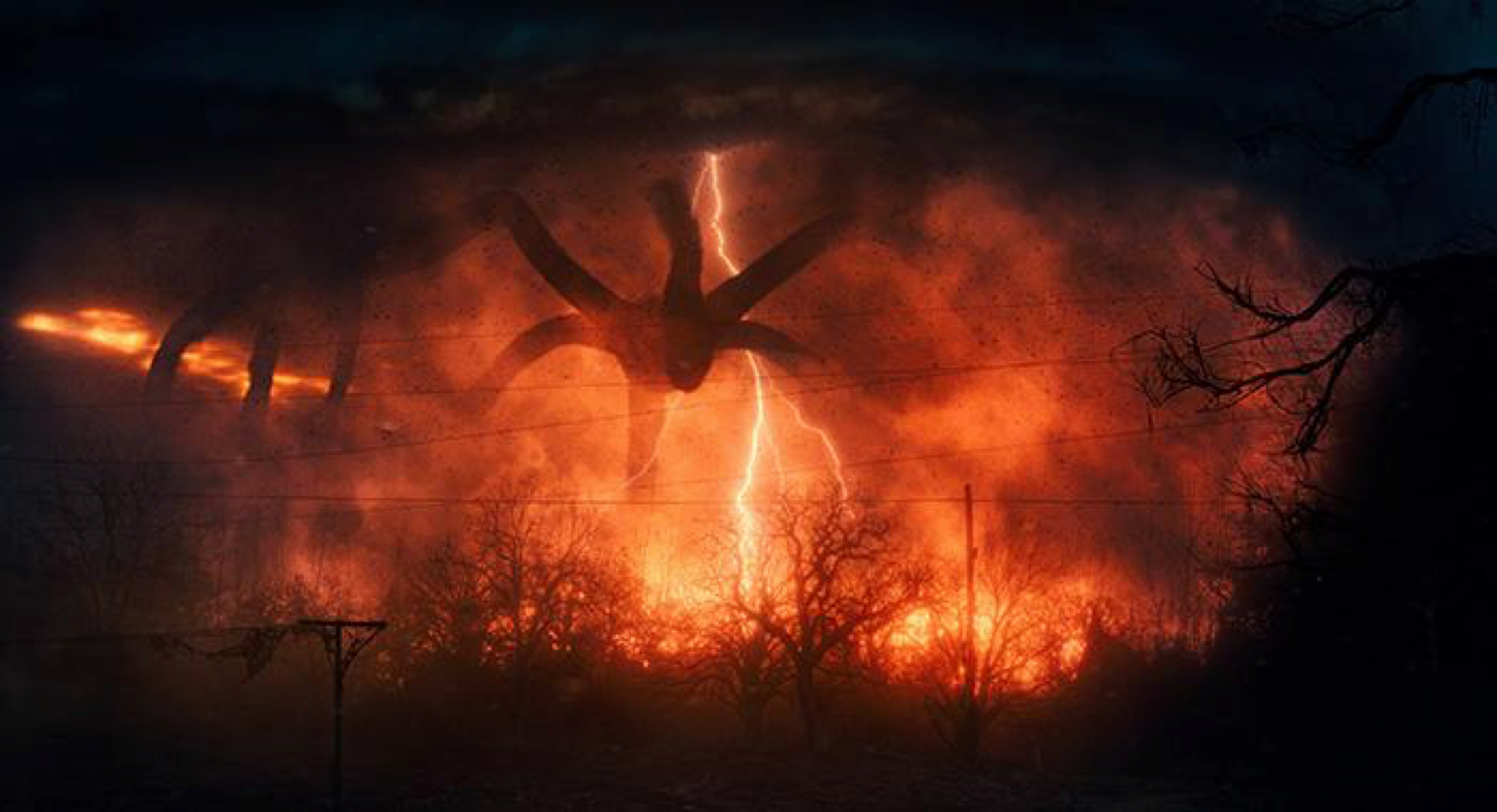
Get you a monster who is: a cthulu, often far away in shots
It’s a touching montage, but the fact that it’s sandwiched between scenes in which his friends and family repeatedly bind, drug, and physically harm him felt . . . weird to me? As the discussion of intertextuality mentions, it’s the ways the show and its creators The Duffer Brothers twist the things they pay homage to that matters. Whether it’s inverting character archetypes or sending whole plotlines into unexpected directions, their tweaks impart what they’re actually thinking about their favorite things. STRANGER THINGS has always carried a notion of darkness, that these are the adventures you remember from your childhood but perhaps more “real” or “gritty,” but when the cost of that “twisted” (insert .gifs of Jared Leto Joker) feeling is violence perpetrated against children, what’s actually going on, what’s actually being said? Anyone who works enough to afford an increasingly expensive Netflix subscription knows that life isn’t fair. I don’t need to see children tortured to understand that bad things happen. Eleven suffering at the hands of the Hawkins Lab makes sense in the logic of the show. She is a victim of the thoughtlessness of adults. How people will pursue selfish interests (read: money and power) at the cost of real human life. Will being tortured to stop some kind of great evil doesn’t fit this kind of clear input/output. This doesn’t mean his predicament is deep or nuanced, it means it’s potentially unmotivated and definitely gratuitous.
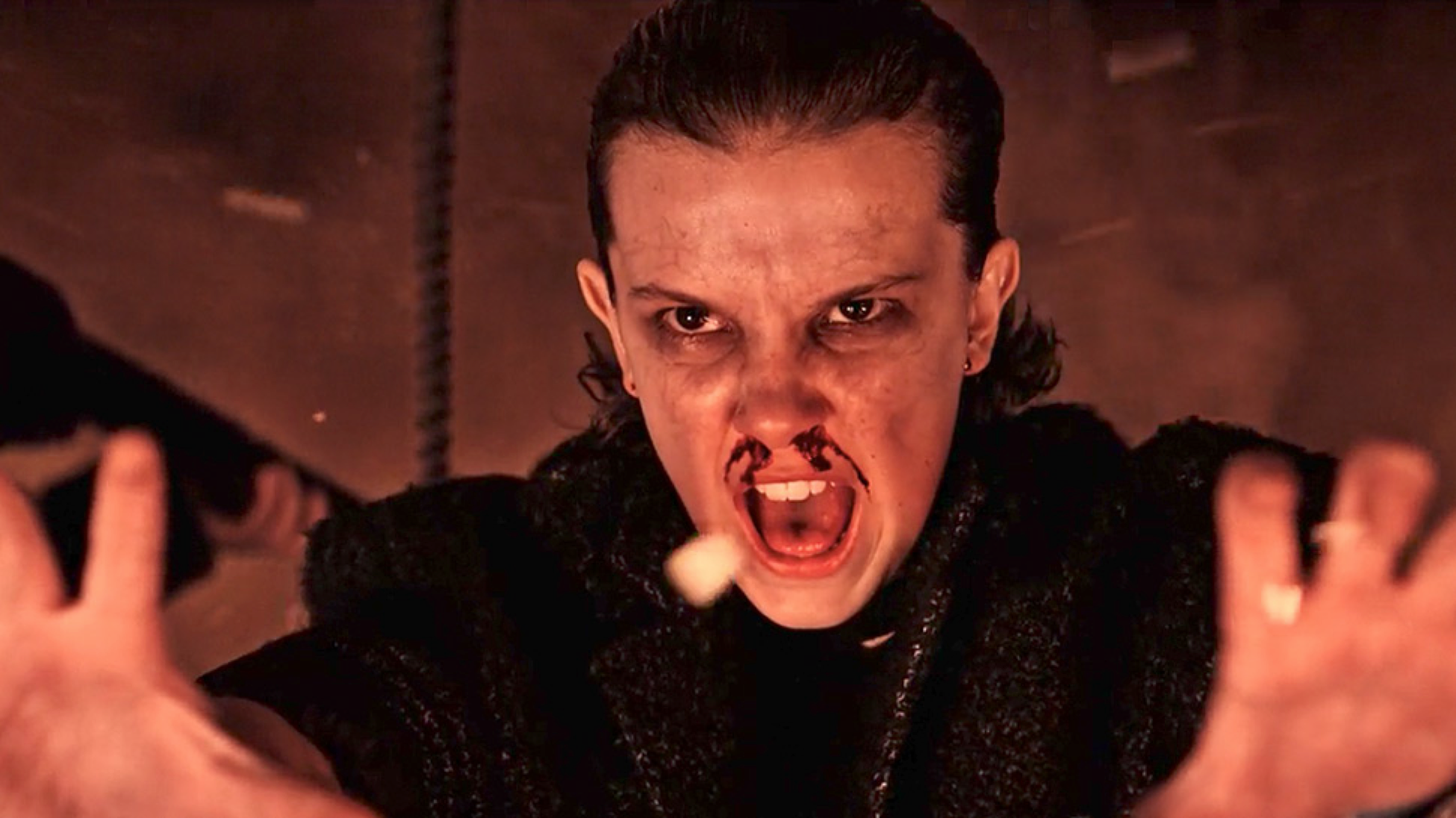
One thing the show doesn’t compromise on? Nosebleeds
STRANGER THINGS and STRANGER THINGS 2 are full of these little compromises. Great storytelling instincts displayed hand-in-hand with questionable motives. This doesn’t mean the show is bad, it means that at its heart it’s a TV show struggling to figure out the dynamics of its story, and that Netflix’s model is not entirely conducive to doing that in any kind of uniform manner. The standalone Eleven episode is evidence of this. Eleven learning about her past is a great idea, especially expanding the world with a new city and a character with powers like hers, but keeping her away from the interesting juxtapositions she has with her friends the entire season is not. The same thing applies to introducing a character like Max—she’s a much needed contrast to the occasional conflicts between the boys, but she’s saddled with the literal baggage of an abusive brother (played by Dacre Montgomery, the Red Power Ranger). Mike becoming an asshole to Max and his friends is . . . well, that’s just bad, and cheapens his character. But to beat my well worn drum, when it’s good, it’s good.The show is a lot of fun. It’s charismatic, with likeable characters played by likeable performers. It’s cheap, but engaging to be presented with so much nostalgia and layers upon layers of reference. It looks great, showcasing what seems to be an increased budget and effects that seem more carefully considered (everything supernatural is much more visually abstract this season, which makes it all the more convincing). There’s a lot of growth on display, rewarding new and old fans alike.
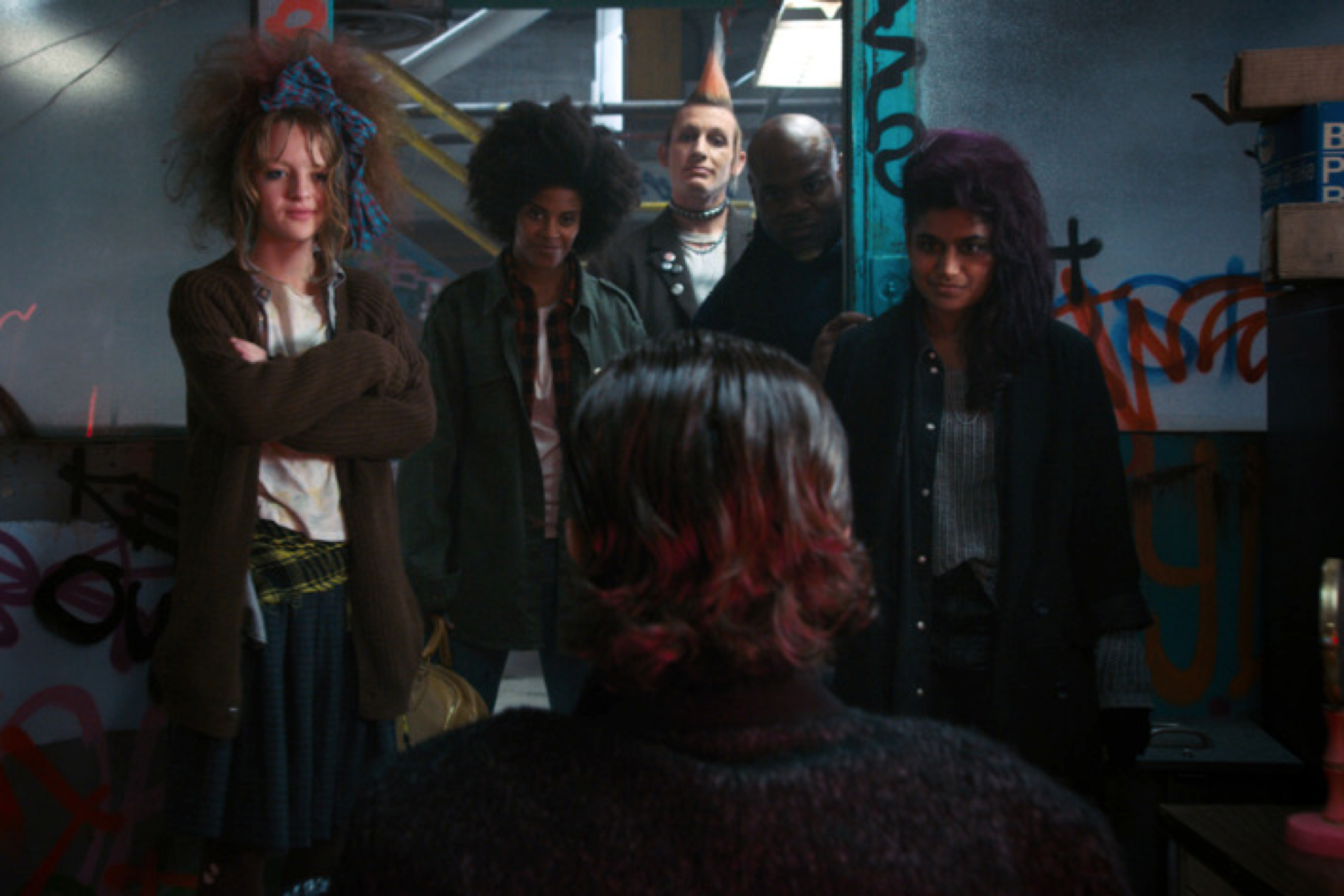
I liked the standalone episode because it featured bold hair choices, among other things
Can you sense my inner turmoil? I find a lot at fault with STRANGER THINGS 2 (really Netflix as a whole), but I genuinely enjoyed watching the show. Cultural movements like these are rare. The monoculture is real, but divided into many many streams of content. We don’t get FRIENDS, THE OFFICE, or LOST-level shows anymore. But STRANGER THINGS is one of those, and it is thrilling to talk to someone about something and feel that you were both as equally engaged. I did it with my roommate just recently and I bet I could have just as easily with a stranger on the street or my sister. That’s sort of magical. In the end, the experience of watching STRANGER THINGS 2 is to feel the comfort its main characters offer each other. Liking something deeply and realizing others feel the same. Being unified in your enjoyment of something. I think that’s nice. Compromised in many ways, but very nice.
Verdict: Recommend



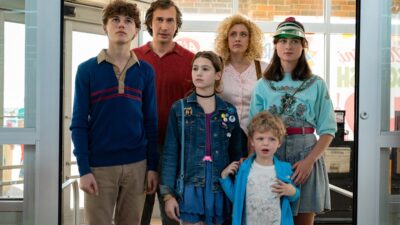
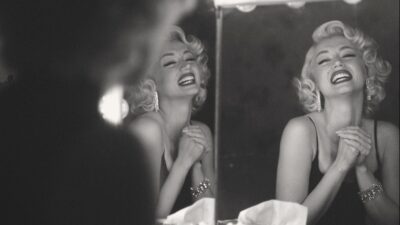

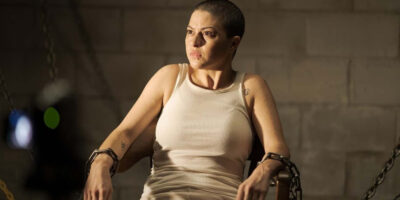

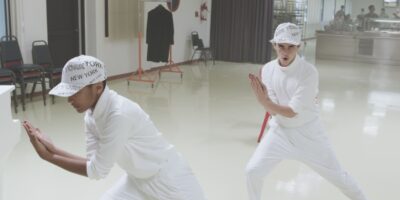

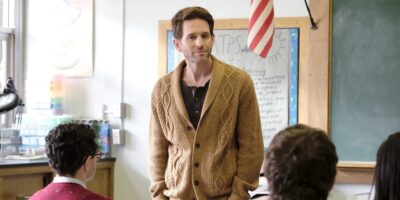


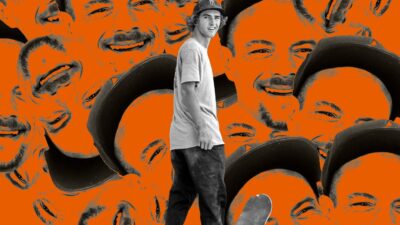


Comments